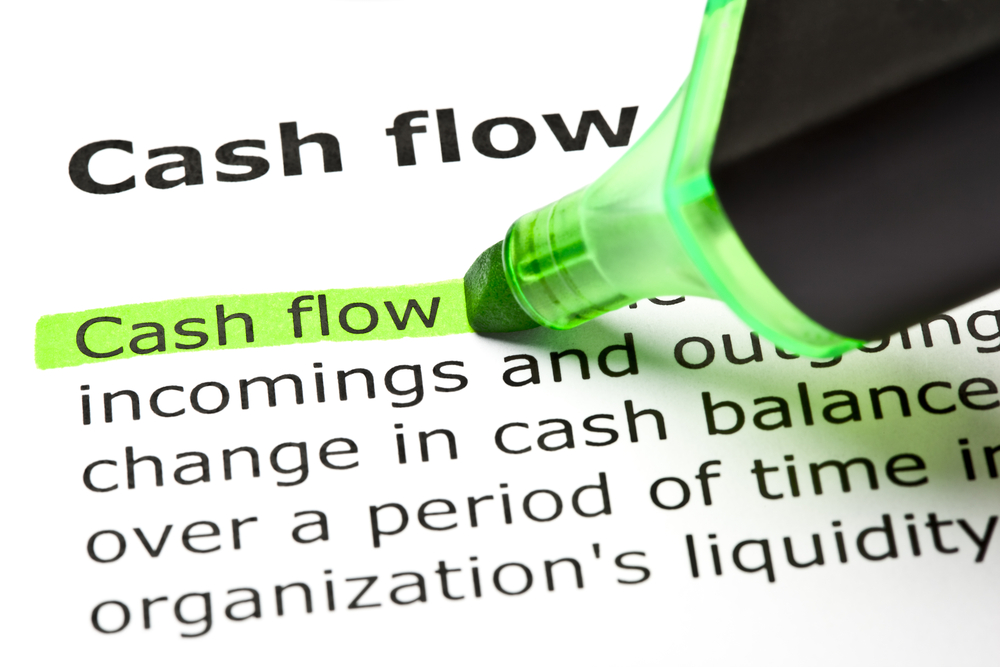A cash flow budget is essential to any business and flows on from your annual budget process.
Once you have your annual budget finalised, it’s a really good idea to prepare a cash flow budget. (If you want to brush up on budgeting, check out our blog here).
What does a cash flow budget do?
That old adage that “cash is king” is absolutely true. The goal of a cash flow budget is to give you early warning as to if or when you will run out of cash. It should be a priority for anyone in business.
How does it work?
Typically you would prepare a cash flow budget for a whole year, broken down into months of the year.
1. Bank balance – The first line of your cashflow budget is your bank balance at the start of the month.
2. Cash inflows – Into that we add receipts from your sales. We call this your “cash inflows”.
Bear in mind that not everyone is going to pay you in full each month so a really important metric to consider is your debtor days. Debtor days tell you how long it takes on average between when you bill someone and when you get paid. For instance, if you terms of trade are payment in 30 days and people normally pay in 45 days, an invoice you raise in February might not get paid until April.
Don’t forget to add in accounts receivable (debtors) into the first few months of the year. These are the payments you’ll receive from previous months. For instance, if your cash flow forecast starts in January, bear in mind that some debtors will be paying you in January from invoices raised in November and December.
3. Cash outflows – You should then deduct all the expenses in the business. This is called your “cash outflows”. Don’t forget to factor in tax, especially GST and income tax. The other thing that people often forget is any capital purchases that need to be made during the year.
You’ll need to consider accounts payable for the first few months of the cash flow budget. In January you will pay for expenses incurred in prior months. You might have bills from November to pay.
It seems to go without saying but don’t include any non-cash expenses like depreciation. This is a cash flow budget and is only concerned with cash transactions.
4. Closing bank balance – After you’ve done all of that, you’ll have an estimated closing bank balance at the month’s end.
Cash flow budgeting is an essential discipline to give you an early warning system in your business. It enables you to quickly see if cash is going to be tight and whether you need to chase debtors or ask for more time to pay with your creditors.
Surely there’s a quicker way
Most people pull together a cash flow budget in a spreadsheet. It can be quite time consuming updating the spreadsheet every time something changes. After all, a budget or a cash flow budget is just a plan – reality always intervenes. So if there is an unexpected expense or a debtor doesn’t pay on time, you need to update the spreadsheet. No matter how disciplined you are, most cash flow forecasts quickly become out of date. Formulas in spreadsheets can break over time giving you incorrect information.
The other option is to get technology to do all of this for you. Although Xero offers basic budgeting, it doesn’t have a cash flow forecast. For that you need third party software.
Float is a new cash flow application that plugs straight into Xero. You can read more about Float by clicking on the link here.
Cash flow budgets need to be reviewed regularly to be effective. This should take place at least monthly. You need to share the information in the forecast. If you need to bring in more cash, make sure the person collecting debt knows who to chase and for how much. Don’t exceed your budget for payments and seek more preferable terms from your creditors where possible.
A little time spent forecasting can avoid sleepless nights down the track.
Copyright © 2015 Generate Accounting Group Limited, All rights reserved.



